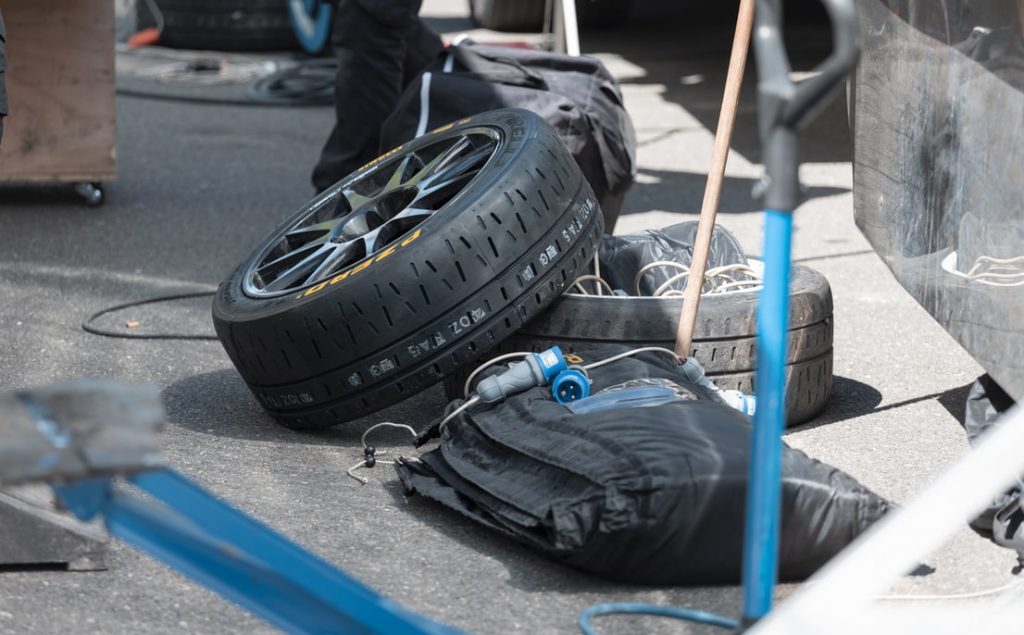Summary
– History
– Characteristics and Use
– What About Today?
– New Technological Solutions
– Where Do You Find the Inner Tube These Days?
The inner tube and the tire: a duo that seems inseparable in the collective spirit. However, the inner tube as it has existed since its origin is a product that is now in short supply. Let’s take a look at the history of the car inner tube and its evolution.
Car Inner Tube: History
First appearing in bicycle tires in 1891, it was Michelin that designed and equipped the first car with tires associated with inner tubes in 1895.
Tubes were used on car tires until the 1990s when they were gradually replaced by tubeless tires.
Car Inner Tubes: Characteristics and Use

The inner tube is a rubber section, equipped with a valve, which slides inside the tire casing. Inflated to an air pressure of 2 to 3 bars, it gives the tire its virtues of elasticity, comfort and road holding. The airtight walls of the inner tube, 0.45 to 1.5 mm thick, are made of vulcanized rubber to resist pressure, thermal variations and mechanical stress.
Its advantages are as follows:
– it can be repaired with patches or replaced if it is too damaged;
– in case of replacement, its price ($10 ) is lower than that of a tubeless tire.
But it also has disadvantages, which have led to its disappearance in the automobile industry:
– it makes the tire heavier;
– it increases the “unbalance” or imbalance of the tire;
– it is a source of overheating, especially in the case of under-inflation;
– a puncture causes immediate deflation of the wheel.
Car Inner Tube: What About Today?
It has now disappeared in the automobile industry and has been replaced by the tubeless tire. Regulations prohibit fitting it in this type of tire (such a fitting is pinned on the technical inspection report under the point: “unsuitable fitting of the tire”).
Good to know: in theory, it is possible to fit an inner tube with a tire designed for this purpose, known as a “tube-type” or “tubeless tire”; in practice, this type of tire is no longer offered for sale for cars.
Car Inner Tubes: New Technological Solutions
If the real inner tube has disappeared in the automotive industry, its principle is still there in other forms:
The Tubeless Tire

The tubeless tire, literally “tubeless tire”, is covered on its inner profile with a butyl ply, an impermeable elastomer material, with the inflation valve attached to the rim.
The inner tube function of a tubeless tire is therefore integrated into the tire, with the lower membrane and the rim flange providing the sealing.
Its big advantage is that it deflates slowly in the event of a puncture, unlike a tubeless tire; it is also lighter.
As for its disadvantages, a slow puncture is not always detected by the driver and its sidewalls can be damaged by under-inflation, necessitating the replacement of the tire.
The “Run-Flat” Tire

There is no more need for a spare wheel, the run-flat tire allows you to continue driving for 100 km despite a puncture.
The tire is puncture-proof: it has reinforced sidewalls that prevent it from collapsing in the event of a puncture. Called “Driveguard” at Bridgestone, it fits on all rims provided it is equipped with an electronic Tire Pressure Monitoring System (TPMS).
The Selfseal® Tire

That’s the name of a tire at Michelin. It is also called “Protectis” at Kléber, “Duraseal” at Goodyear, “Contiseal” at Continental. In the event of a puncture, a film of waterproof products instantly fills the leakage hole, preventing the tire from deflating.
These examples of new technological solutions are a non-exhaustive list, as manufacturers are constantly developing new tire concepts.
Car Inner Tube: Where Can You Find the Inner Tube These Days?

If it has been eradicated from the automotive field, it can still be found:
– In the bicycle industry, where the tubeless tire has not yet made its revolution.
– In the motorcycle field: increasingly rare, it still persists in some niches where the mechanical constraints due to track impacts are not very compatible with tubeless rims (motocross and enduro discipline).

– For the same reasons, it is still present in off-road quad bikes.
– In other industrial fields, it is still found where the use of a slow puncture tire is not justified (load lifting, trailers, small construction equipment such as concrete mixers, wheelbarrows, etc.).
Note: in motocross and enduro, some users now fit puncture-proof hoses made of specific foam, reproducing the riding qualities of inner tubes; this technology, called “bib mousse” at Michelin, has not completely replaced the inner tube because of its cost and the extreme difficulty of fitting the “bib mousse” in the tire.
If you wish, we can put you in touch with one or more inner tube suppliers. They will be able to offer you a free, no-obligation quote. Remember to write down your comments in the section below.

